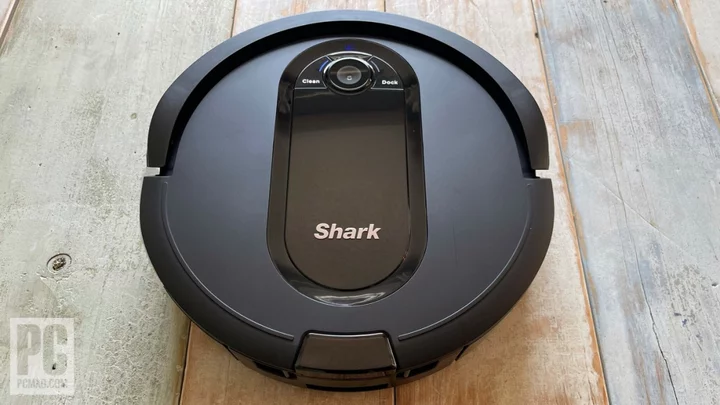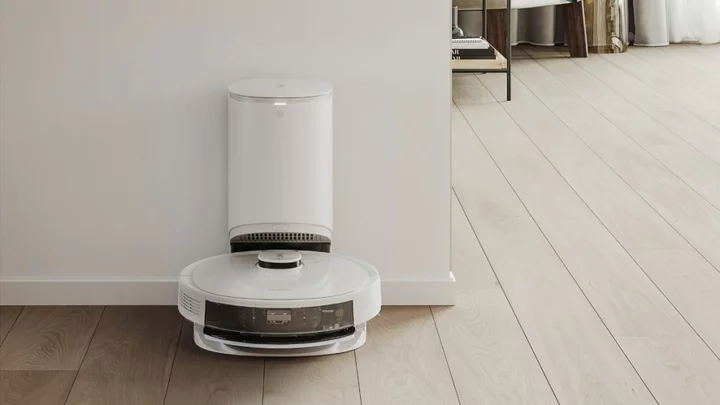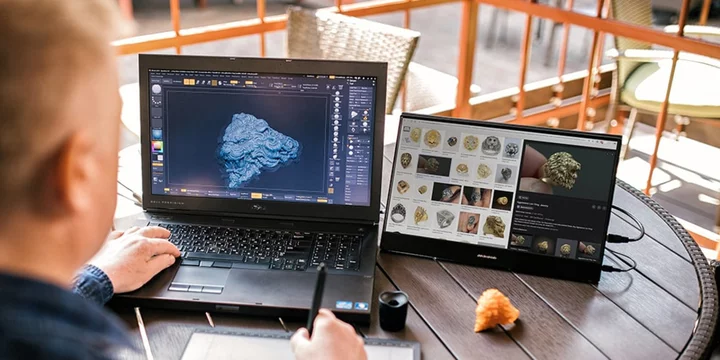Vacuums have come a long way. You no longer have to suffer the indignity of dragging around an unwieldy plastic hose that's connected to a clumsy, wheeled canister the size of a Galapagos tortoise. In fact, you don't even need to get off the couch. Robot vacuums can help you dispose of dust, pet hair, and other debris in your home with minimal effort on your part.
Unlike more traditional canister or stick models, robot vacuums are autonomous and (for the most part) intelligent. The vacuums we've tested use lasers, motherboards, sensors, and even Wi-Fi to navigate around your home without assistance. With a few exceptions, you barely have to interact with them.
The Best Robot Vacuums for 2022Just pick a robot-accessible spot for the charging dock, and the bot will return by itself before it runs out of juice. When it does, it stays put until it has enough energy to go back out and continue to bust dust from where it left off. You can also set schedules for most bots to wake up and start a cleaning job, so it can take place while you're out of the house. That means you can potentially avoid all physical interaction until you need to empty its canister. Even better: Some models actually empty themselves!
With so many different features to choose from, which robot vacuum is right for you? We've rounded up the best models we've tested to help you decide. Read on for our top picks, as well as all the factors you should consider when buying a robot vacuum.
Are Robot Vacuums Really Worth It?
A robot vacuum usually costs more than a traditional vacuum, though not always. The models here range from around $200 to more than $1,000 (Dyson's upcoming 360 Vis Nav model will likely fetch close to $1,600). That's a pretty sizable investment, even on the lower end. Let's consider just what you get for the price.
Unless you really love to vacuum, the task itself is pretty mundane. Depending on the size of your house, a robot vacuum can save you anywhere from minutes to hours of your time every week by taking care of a pretty thankless chore. That alone is reason enough for some people to consider one.
Ecovacs Deebot X1 Omni (Credit: Angela Moscaritolo)Moreover, robot vacuums have reached the point where they're just as powerful and effective as regular vacuums. The robots here combine spinning brushrolls and side brushes to clean your home just as well as their upright equivalents. They're also fairly compact, so they won't take up much space. And they're slim enough to travel underneath most couches and tables, so you don't have to rearrange the furniture.
Wi-Fi-connected robot vacuums are much more affordable now than in the past. What are the benefits of connectivity? You can program and control most smart robot vacuums from your phone or with your voice via Amazon Alexa and Google Assistant integrations.
Shark IQ Robot Self-Empty XL R101AE app (Credit: Shark)Connected bots also typically generate statistics and maps of the areas they clean. Many even create personalized floor plans, allowing for targeted room cleanings and eliminating the need for you to use "virtual walls" to cordon off sections of your home.
Some of the most advanced robot vacuums, such as the iRobot Roomba j7+, feature a camera and artificial intelligence technology to automatically identify and avoid obstacles like shoes, toys, and even pet waste. Premium models might also function as a roving home security camera, letting you view live video of your home from wherever you are.
What Is the Best Self-Emptying Robot Vacuum?
One of the best innovations in the robot vacuum space in recent years has been the development of models that can empty their own dustbins. Beyond offering greater convenience than traditional models, they significantly limit your exposure to dust, a big plus if you suffer from allergies. As recently as a couple of years ago, it was difficult to find a sub-$1,000 self-emptying robot vacuum, but the price of these models has been decreasing. Several excellent options are now available for less than $600.
iRobot Roomba j7+ (Credit: Angela Moscaritolo)Most self-emptying models transfer the contents of their bin into a bag, which typically hold around 30 to 60 days' worth of debris, depending on how often you vacuum and how dirty your home is. The nice thing is that you never have to come into contact with dust and debris. The downside is that you eventually have to buy more bags when you run out.
An exception is the Shark IQ Robot Self-Empty XL, which has two dustbins: one in the robot itself, and a larger one in the base station that holds up to a month's worth of debris. When it's full, you simply remove the dustbin, hold it over a trash can, then press the Empty button on the side. The bottom of the dustbin opens, and the contents fall out into the trash. Although allergy sufferers may prefer models that empty their contents into a bag, the IQ Robot XL is more convenient and wallet-friendly, because you don't have to worry about buying replacement bags.
The Shark IQ Robot Self-Empty XL's large dustbin (Credit: Angela Moscaritolo)Self-emptying or not, most robot vacuums also equip small HEPA filters that capture allergens as they run.
Which Robot Vacuum Is Best for Pet Hair? Hardwood?
To pick up pet hair, you need a robot vacuum with strong suction power. Most companies in this space advertise power in pascals (Pa), the metric unit of pressure, though iRobot doesn't always make this information easy to find. In general, the more power, the better, especially if you have carpet, but battery life and obstacle avoidance capabilities are also important factors. High-end robot vacuums are tipping 5,000Pa of suction these days, but you don't necessarily need that much power. Robot vacuums with around 2,500Pa can still lift pet hair, but might need more passes to get it all.
Generally speaking, all the vacuums on this list can clean hardwood floors without issue. To avoid damage, we recommend testing your bot in a small area on a low power level, then checking for scratches before running it on max unsupervised.
If you have both carpet and hard flooring throughout your home, you might want to consider a hybrid that can do double duty as a vacuum and a mop, such as the Bissell SpinWave Wet and Dry. Standalone robot mops aren't eligible for this list because they don't suck up dirt and debris, but they can leave your hard floors nice and shiny.
For more, see our lists of the best robot vacuums for pet hair and the best robot mops.
How We Test Robot Vacuums
We test robot vacuums in our homes, with the following categories in mind: battery life, navigation, obstacle avoidance, the setup process, and suction power. If it supports Bluetooth or Wi-Fi, we also evaluate the app experience and other smart features.
Chances are you don't want to babysit your vacuum. That means you're looking for a robot that can traverse different floor types or maneuver around furniture without your help. This is especially true if you have dark flooring, as infrared sensors might mistake a black carpet for a ledge, and refuse to pass over it. We test vacuums on hardwood, tile, and rugs to see how well they manage the transitions across various surfaces.
Roborock S7 MaxV Ultra (Credit: Angela Moscaritolo)Battery life is also important to consider based on the size of your home. In general, most robot vacuums can run for at least 60 to 70 minutes, which should be enough to tackle smaller homes and apartments. If you have a bigger living area, look for a robot vacuum with at least 90 minutes of battery life so it can hit every room before requiring a recharge. To test this aspect, we fully charge the battery, start a cleaning cycle, and time how long the robot runs before it needs to be docked. In some cases, it may take several complete cleaning cycles for a robot to run out of battery.
Another note on battery life: The number you see in the chart below is what we got in testing with the normal mode active. High-power modes often bring that number down.
Most robot vacuums are reliable when it comes to getting rid of standard household detritus, so you don't have to worry about whether they can suck up lint, dirt, or hair. Since we test all the robot vacuums in the same home environment, we check how full the dustbins get and whether the robot picks up obvious debris like pet hair and dust bunnies.
Wyze Robot Vacuum app (Credit: Wyze)We also note whether the robot cleans in a random or methodical pattern. Many of the latest models feature a Light Detection and Ranging (LiDAR) laser (the same technology self-driving cars use) to map your home and plan an efficient cleaning route. But some affordable robot vacuums still haphazardly ping-pong from wall to wall, inefficiently crossing over the same space multiple times as they clean.
Finally, we test how easy it is to set up, program, and control the robot. Some require only an initial battery charge, while others ask you to install side brushes and batteries. For connected bots, app design and reliable Bluetooth or Wi-Fi are major factors that impact your experience.
We provide a detailed analysis of each of these vacuums in our reviews, and you can see our vacuum product guide for the latest models. If you specifically want to stick with the iRobot brand, we also have a roundup of the best Roombas. When you find the right one for you, be sure to read up on our simple robot vacuum tips.









